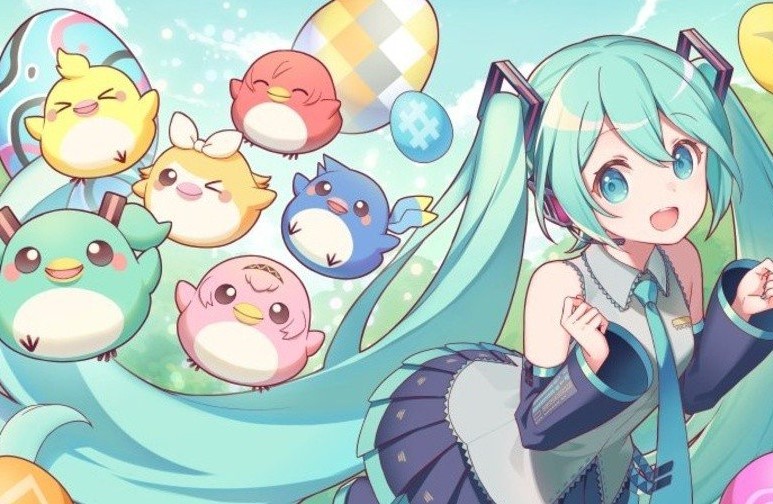Ever play a game that’s just so utterly pleasant that you find yourself smiling just by thinking about it? That’s the experience that defines Hatsune Miku Connecting Puzzle Tamagotori. It’s such a happy game. It’s odd and doesn’t really make sense within the broader Hatsune Miku landscape… or perhaps it does because it brings a pure joy into the world and that’s ultimately what Miku is about. Either way, though, odd as it is, Connecting Puzzle Tamagotori is a near-perfect way to spend a relaxing couple of hours.
The game itself is a simple matching exercise. There’s a grid, and across it is a kaleidoscope of brightly coloured eggs. Your goal is to match two of the same coloured egg so that they disappear off the board. The puzzle is that you need to figure out the right order to match them so that the pairs aren’t blocked from one another. There are a few rules governing the lines that can be drawn between the eggs (only a certain number of “turns” per line and so on), so it is possible to snooker yourself so that a puzzle is impossible. That being said, it is very, very difficult to fail at this game’s puzzles. The complexity of them does pick up towards the latter half of the game, but overall, they’re there to relax with and enjoy.
Aside from the gallery art and the music, so little of this game is directly about Hatsune Miku. Rather, it’s a hugely abstract thing, and it shows that Crypton seems to be more interested in associating Miku with a certain aesthetic and verve than directly sticking her into every game. There are some mobile games that are similar, with minimal to downright non-existent direct Miku elements, though this one offers the least Miku I’ve seen in a Miku title to date. Some might see that as an issue, but I actually think it’s pretty clever brand management by Crypton. Obviously, the character is important to the overall Miku IP, but the overall IP was also meant to be more aligned with a wholesome brightness and warm, sweet energy than it was any single character design. Reminding people that there’s something to these vocaloids that transcends the characters is a wise idea, because characters can fall out of fashion and lose their audience and that is something that Crypton, as a business, badly needs to avoid. That’s why Disney is so hesitant to pull Mickey Mouse out these days; the value of the character could only be diminished if people realised that the audience for Mickey was shrinking. Miku could go the same way (especially now that the VTuber phenomenon is creating endless numbers of digital celebrities). However, if Crypton can associate Miku with the elevated and abstracted warmth that these games drive at, they could turn her into a Mario or Dragon Quest slime-like mascot whose enduring popularity is due to the aesthetic they represent, rather than the mascot character in isolation.








